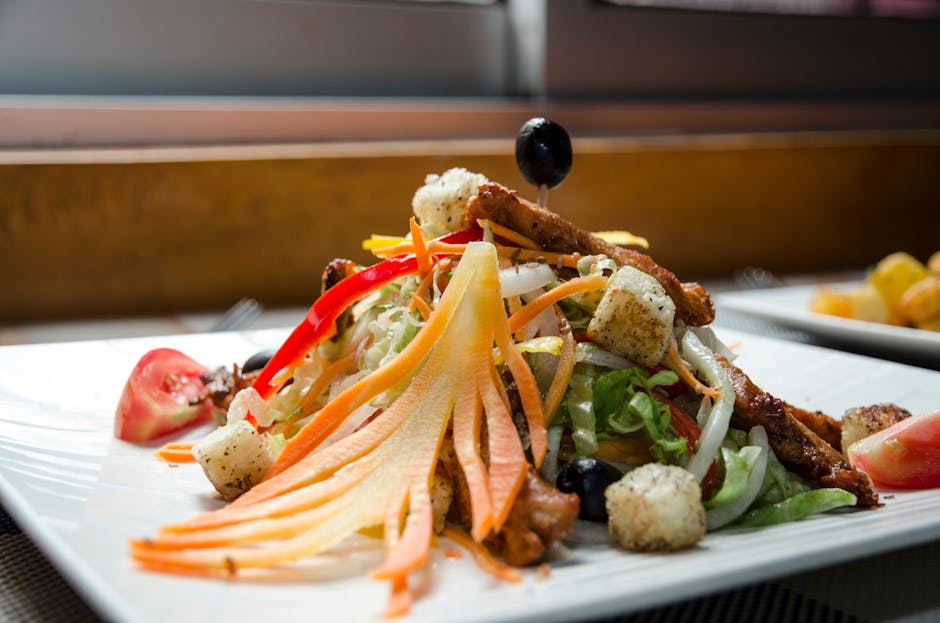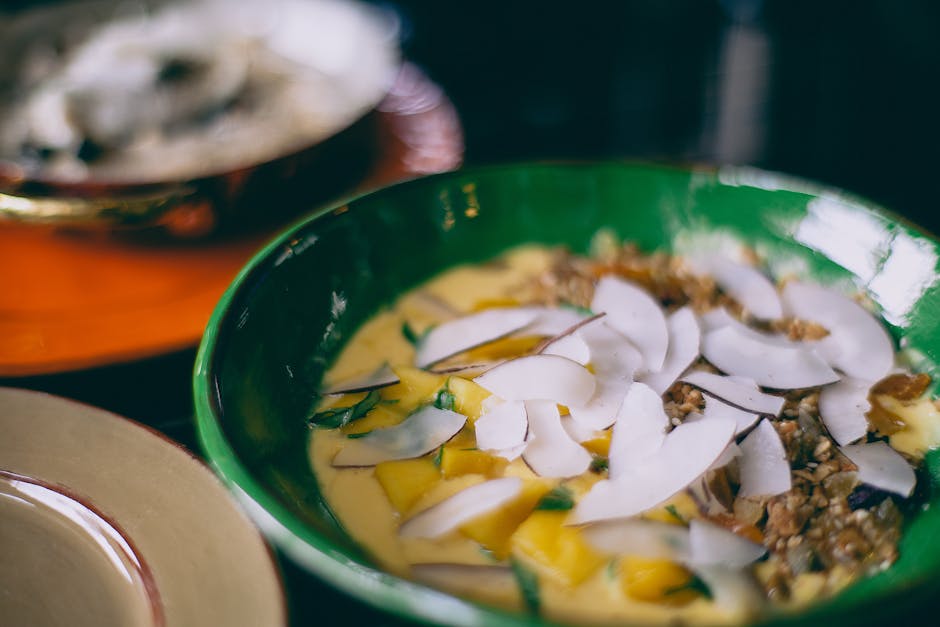Easy Vegetable Stir-fry, a seemingly simple dish, boasts a rich and fascinating history interwoven with the culinary traditions of East and Southeast Asia. While pinpointing a single origin is impossible, its roots lie firmly in the centuries-old practices of Chinese cooking. The technique of stir-frying, characterized by quick cooking over high heat in a wok, emerged in China, possibly as early as the Song Dynasty (960-1279 AD), though its precise timeline remains debated amongst food historians. The use of woks, initially made of iron, allowed for efficient and even cooking, essential for preserving the vibrant colors and crisp textures of vegetables. This method became crucial in regions where fresh produce was abundant but refrigeration was limited, necessitating quick cooking to prevent spoilage.
The evolution of stir-fry wasn’t merely a matter of technique; it also reflected cultural influences and adaptations. Different regions of China, and later, other Asian countries like Thailand, Vietnam, and Japan, developed their own unique variations, utilizing locally sourced ingredients and distinct flavor profiles. The Cantonese, for instance, are often credited with popularizing stir-fry globally, through their extensive diaspora and the subsequent spread of their culinary practices. This dissemination wasn’t just about replicating recipes; it was about cultural exchange, with each region contributing to the vast and diverse landscape of stir-fry dishes today. The adaptable nature of stir-fry – its ability to incorporate almost any vegetable, protein, and sauce – is a testament to its enduring appeal and its capacity to reflect regional tastes.
Today, stir-fries are a global culinary phenomenon. Statistics show that stir-fried dishes represent a significant portion of vegetable consumption worldwide, particularly in countries with a strong Asian culinary influence. Beyond simple nutritional value, stir-fries embody a philosophy of mindful cooking, emphasizing the importance of fresh, high-quality ingredients. The quick cooking time ensures that nutrients are retained, making it a healthy and efficient meal option. Furthermore, the versatility of stir-fries contributes to its enduring popularity; it’s a budget-friendly, time-saving, and endlessly adaptable dish. Whether it’s a simple vegetable stir-fry with soy sauce and garlic or a complex creation with multiple proteins and exotic spices, this dish continues to be a staple in countless kitchens around the globe, a testament to its historical depth and culinary adaptability.
Ingredients and Measurements
This recipe for Easy Vegetable Stir-Fry yields approximately 4 servings. Accurate measurements are key to achieving the perfect balance of flavors and textures. We recommend using a kitchen scale for the most precise results, especially when measuring vegetables. However, standard measuring cups and spoons are perfectly acceptable if you don’t have a scale.
Vegetables: The beauty of a stir-fry is its versatility. Feel free to substitute your favorite vegetables based on seasonality and availability. However, we recommend sticking to vegetables that cook at relatively similar rates to maintain even texture. For this recipe, we’ll use a combination of:
- 1 cup broccoli florets (about 1 medium head): Choose firm, bright green florets. If using a larger head, trim away the tough stem and cut into bite-sized pieces. Avoid over-crowding the pan, which can lead to steaming instead of stir-frying.
- 1 cup sliced bell peppers (about 1 large): Any color works! Red, yellow, and orange bell peppers add vibrant color and sweetness. Cut into thin strips for even cooking. Remove the seeds and membranes for a less bitter flavor.
- 1 cup sliced carrots (about 2 medium): Peel and slice the carrots into thin, matchstick-like pieces or use a julienne peeler for efficiency. Thinner slices will cook faster and more evenly.
- 1/2 cup snow peas (about 1/2 pound): Trim the ends of the snow peas before using. Their delicate texture makes them a perfect addition to the stir-fry. Avoid overcooking snow peas as they can become mushy.
- 1/2 cup sliced mushrooms (about 4-5 oz): Cremini, shiitake, or button mushrooms all work well. Slice them evenly for consistent cooking. If using larger mushrooms, slice them thinly to ensure they cook through.
Protein (Optional): While this recipe is vegetarian, you can easily add protein. We suggest:
- 1 cup cooked chicken breast, sliced: Use leftover chicken or cook it beforehand. Cut into bite-sized pieces.
- 1 cup firm tofu, cubed and pressed: Pressing the tofu removes excess water, resulting in a crispier texture.
- 1 cup shrimp, peeled and deveined: Shrimp cooks quickly, so add it towards the end of the cooking process.
Sauce: The sauce is what brings this stir-fry together. We’ll use:
- 1/4 cup soy sauce (or tamari for gluten-free): Provides a salty and savory base.
- 2 tablespoons rice vinegar: Adds a touch of acidity to balance the sweetness.
- 1 tablespoon honey or maple syrup: For a touch of sweetness (adjust to taste).
- 1 tablespoon cornstarch: Thickens the sauce beautifully. Mix the cornstarch with 2 tablespoons of water before adding it to the sauce to prevent clumping.
- 1 teaspoon sesame oil: Adds a nutty aroma and flavor. Use toasted sesame oil for a richer flavor.
- 1 clove garlic, minced: Adds a pungent aroma and flavor.
- 1/2 teaspoon grated ginger: Provides a warm, spicy kick.
Oil: Use 2 tablespoons of your preferred cooking oil, such as vegetable oil, canola oil, or peanut oil, for stir-frying. High smoke point oils are recommended for stir-frying at higher temperatures.
Preparation Phase: (Includes washing, chopping vegetables, prepping sauce)
The success of any stir-fry hinges on meticulous preparation. Taking the time to properly wash, chop, and prepare your ingredients will ensure even cooking and a vibrant, flavorful final dish. This section details the preparation steps for our Easy Vegetable Stir-Fry, designed to minimize prep time while maximizing flavor.
Washing Vegetables: Begin by thoroughly washing all your vegetables under cool, running water. Remove any loose dirt or debris. For leafy greens like broccoli or spinach, consider soaking them in a bowl of cold water for a few minutes to dislodge any hidden dirt. After washing, pat the vegetables dry with paper towels. This helps prevent excess water from steaming the vegetables during the stir-fry, which can lead to a soggy result.
Chopping Vegetables: Consistent chopping is key to even cooking. Aim for roughly uniform pieces of similar size and thickness for all your vegetables. This ensures that everything cooks at the same rate. We’ll be using the following quantities and chopping techniques:
- 1 cup broccoli florets: Cut into bite-sized pieces, approximately ½ inch to ¾ inch in size. Avoid overly small pieces, which can become mushy.
- 1 red bell pepper: Remove the stem, seeds, and membranes. Dice into ½-inch pieces. A sharp knife makes this process much quicker and easier.
- ½ cup sliced carrots: Use pre-sliced carrots for convenience, or slice your own into thin, ¼-inch rounds. Matchstick carrots also work well.
- 1 small onion: Peel and finely chop. Aim for a small dice of about ¼ inch. This allows the onion to soften quickly without overpowering the other vegetables.
- 2 cloves garlic: Mince finely. A garlic press can be used for efficiency, but finely chopping with a knife works just as well. Don’t over-mince, as this can release too much of the garlic’s pungent flavor.
- ½ cup snow peas (or sugar snap peas): Trim the ends and leave whole if they are small; otherwise, halve or quarter them lengthwise for even cooking.
Prepping the Sauce: While your vegetables are being chopped, prepare the stir-fry sauce. This prevents last-minute rushing and ensures that the sauce is perfectly blended. For our recipe, we’ll use:
- 2 tablespoons soy sauce: Use low-sodium soy sauce to control the salt content.
- 1 tablespoon rice vinegar: Adds a pleasant tanginess to balance the soy sauce.
- 1 tablespoon honey or maple syrup: Provides sweetness and a touch of gloss.
- 1 teaspoon cornstarch: Thicken the sauce slightly. Mix the cornstarch with a little cold water before adding it to the sauce to prevent clumping.
- ½ teaspoon sesame oil: Adds a nutty aroma and flavor.
In a small bowl, whisk together all the sauce ingredients until smooth and completely combined. Set aside until ready to use. Remember to taste the sauce and adjust seasonings as needed. You may prefer to add more or less of any ingredient based on your personal preference.
With all your vegetables chopped and the sauce prepared, you are ready to move on to the cooking phase of your Easy Vegetable Stir-Fry. Proper preparation is the key to a delicious and successful dish.
Cooking Techniques: Stir-Frying Methods & Ingredient Order
Mastering the art of stir-frying is key to creating a delicious and healthy vegetable stir-fry. This technique relies on high heat and quick cooking times to preserve the vibrant colors and crisp-tender texture of your vegetables. We’ll break down the process step-by-step, focusing on proper methods and the crucial order of adding ingredients.
Choosing the Right Wok or Pan: While a wok is traditionally used for stir-frying, a large, wide-bottomed skillet or frying pan will work just as well. The key is to have a pan with sloping sides that allow for even heat distribution and easy tossing of ingredients. Ensure your pan is properly seasoned if it’s cast iron or carbon steel to prevent sticking.
Preparing Your Ingredients: Before you even turn on the stove, proper preparation is essential. Uniformly sized pieces of vegetables cook evenly, so chop everything into bite-sized pieces of roughly the same size. This ensures consistent doneness and prevents some vegetables from becoming overcooked while others remain raw. Aim for pieces around ½ inch to ¾ inch in size. This is especially crucial for harder vegetables like carrots and broccoli.
The Stir-Frying Process: Begin by heating your wok or pan over high heat. Add 1-2 tablespoons of oil with a high smoke point, such as vegetable, canola, or peanut oil. Once the oil is shimmering (but not smoking), add your ingredients in a specific order:
1. Aromatics (1-2 minutes): Start with aromatics like minced garlic (1-2 cloves), ginger (1 tablespoon, grated), or scallions (2-3, chopped). Sauté these briefly until fragrant, about 1 minute, to build a flavorful base for your dish. Don’t let them brown or burn.
2. Heartier Vegetables (3-4 minutes): Next, add harder vegetables that require longer cooking times, such as carrots, broccoli stems, bell peppers, or potatoes. Stir-fry for 3-4 minutes until slightly softened but still crisp. Continuous movement is key to prevent burning. Use a spatula or tongs to constantly toss the vegetables while ensuring even cooking.
3. Delicate Vegetables (2-3 minutes): Add more delicate vegetables like mushrooms, zucchini, snow peas, or leafy greens. These cook much faster and will become mushy if overcooked. Stir-fry for 2-3 minutes until tender-crisp.
4. Protein (if using) (3-5 minutes): If you’re adding protein (such as tofu, chicken, or shrimp), add it now. Cook until heated through and slightly browned. Pre-cooking protein before adding it to the stir-fry is highly recommended, especially for meats, to ensure it’s fully cooked.
5. Sauce (1 minute): Finally, add your sauce. A simple stir-fry sauce can be made with soy sauce (2 tablespoons), rice vinegar (1 tablespoon), honey or brown sugar (1 tablespoon), and cornstarch slurry (1 tablespoon cornstarch mixed with 2 tablespoons water). Stir continuously until the sauce thickens and coats the vegetables.
6. Garnish and Serve: Remove from heat and garnish with sesame seeds, chopped scallions, or chili flakes, if desired. Serve immediately over rice or noodles for a complete and satisfying meal. Remember to taste and adjust seasonings as needed.
Professional Recommendation: Don’t overcrowd the pan! If you have a large amount of vegetables, stir-fry them in batches to ensure even cooking and prevent steaming. This maintains the desired texture and prevents the vegetables from releasing excess water, which can lead to a soggy stir-fry.
Serving Suggestions
Your Easy Vegetable Stir-Fry is incredibly versatile and can be enjoyed in a multitude of ways, depending on your taste and the occasion. Here are some serving suggestions to elevate your culinary experience:
As a Main Course: For a complete and satisfying meal, serve 1 ½ to 2 cups of stir-fry per person. This generous portion will leave you feeling full and energized. Consider adding a protein source to make it even heartier. 4-6 ounces of cooked chicken, shrimp, tofu, or beef would be a perfect complement. Simply add the protein during the last few minutes of cooking, ensuring it’s heated through.
Serving with Rice or Noodles: A classic pairing for any stir-fry is steamed rice or noodles. We recommend serving 1 cup of cooked rice or 1.5 cups of cooked noodles per person. Jasmine rice, brown rice, or even quinoa are all excellent choices. For noodles, try thin spaghetti, egg noodles, or even rice noodles for a more authentic Asian flair. Don’t overcook your noodles or rice; slightly firm texture is ideal to prevent a soggy dish.
Adding a Sauce Boost: While the stir-fry itself is flavorful, you can enhance the experience with a dipping sauce. A simple soy sauce and rice vinegar mixture (2 tablespoons soy sauce, 1 tablespoon rice vinegar) is a classic choice. Alternatively, a spicy chili garlic sauce, peanut sauce (combine peanut butter, soy sauce, rice vinegar, honey, and a little water for desired consistency), or a sweet and sour sauce can add exciting dimensions to the dish. Offer a variety of sauces to cater to different palates.
Garnishing for Visual Appeal and Flavor: A sprinkle of fresh herbs like chopped cilantro or green onions adds a pop of color and freshness. Toasted sesame seeds provide a delightful nutty aroma and texture. A squeeze of lime juice just before serving brightens the flavors and adds a touch of acidity. Consider adding a few thinly sliced red chilies for a visual and spicy kick (use with caution, considering spice tolerance).
Building a Balanced Meal: To create a well-rounded and nutritious meal, pair your stir-fry with a side of steamed vegetables like broccoli or bok choy, or a simple green salad. This adds extra vitamins and fiber, creating a more balanced and healthy eating experience. Consider seasonal vegetables to maximize freshness and flavor.
Leftovers: This stir-fry is delicious reheated! Store leftovers in an airtight container in the refrigerator for up to 3 days. Reheat gently in a pan on the stovetop or in the microwave, adding a splash of water or broth if it becomes too dry. Avoid over-reheating, as this can diminish the quality of the vegetables.
Creative Variations: Don’t be afraid to experiment! Add different vegetables based on your preferences and seasonal availability. Try incorporating bell peppers, mushrooms, zucchini, or even snow peas for added variety. Remember to adjust cooking times depending on the vegetables used.
Tips and Tricks: (For Maximizing Flavor, Dealing with Different Vegetables)
Mastering the art of vegetable stir-fry hinges on understanding how different vegetables behave during cooking and how to best highlight their individual flavors. This section offers tips and tricks to elevate your stir-fry from good to gourmet.
Maximizing Flavor: The key to a flavorful stir-fry lies in proper preparation and the right balance of ingredients. Don’t be afraid of seasoning! Start with a high-quality oil – about 2 tablespoons of peanut, sesame, or vegetable oil – heated in a wok or large skillet over medium-high heat. This high heat helps to sear the vegetables, locking in their natural juices and enhancing their flavor.
Using Aromatics: Before adding your vegetables, sauté 1-2 cloves of minced garlic and 1-inch piece of ginger (also minced) for about 30 seconds until fragrant. This adds a depth of flavor that forms the base of your stir-fry. You can also experiment with other aromatics like shallots, scallions, or even a small chili for a spicy kick. Remember to adjust the quantities based on your preference and the amount of vegetables you are using.
Dealing with Different Vegetables: Vegetables cook at different rates. Harder vegetables like broccoli, carrots, and bell peppers need to be added first, as they require more time to become tender-crisp. Add approximately 1 cup of each of these, chopped into roughly 1-inch pieces. Cook for 3-4 minutes, stirring frequently, until they begin to soften but still retain a slight crunch.
Adding Delicate Vegetables: Next, add more delicate vegetables like snow peas, mushrooms (about 1 cup of each), and leafy greens (such as spinach or bok choy, about 2 cups, roughly chopped). These cook much faster. Stir-fry for another 2-3 minutes, until they are wilted but still vibrant in color. Overcooking will result in mushy vegetables.
Seasoning Throughout: Don’t just season at the end! Season your vegetables as you add them to the wok. A sprinkle of salt and freshly ground black pepper enhances the flavors of each vegetable individually. You can also add a dash of soy sauce (1-2 tablespoons) or fish sauce (1 teaspoon) at this stage to further boost the umami.
Sauce is Crucial: Once all the vegetables are cooked, add your stir-fry sauce. A simple sauce can be made with 2 tablespoons soy sauce, 1 tablespoon rice vinegar, 1 tablespoon honey or brown sugar, and 1 teaspoon cornstarch mixed with 2 tablespoons of water (to thicken). Bring the sauce to a simmer, coating the vegetables evenly. Don’t overcook the sauce, or it will become too thick.
Finishing Touches: To finish, you can add a sprinkle of sesame seeds for added texture and flavor, or a squeeze of lime juice for brightness. Garnish with chopped scallions for a pop of color and freshness. Serve immediately over rice or noodles for a complete and delicious meal.
Important Note: Vegetable quantities are suggestions and can be adjusted to your liking. Always taste and adjust seasoning as needed. The beauty of stir-fry is in its adaptability; experiment with different vegetables and seasonings to create your own signature dish!
Nutritional Information (Values and Calories)
This nutritional information is an estimate based on a serving size of approximately 1.5 cups (350g) of Easy Vegetable Stir-Fry, prepared using the recipe provided. Actual values may vary slightly depending on the specific ingredients used, their quantities, and cooking methods. For example, the type of oil used will significantly impact the fat content. We recommend using a heart-healthy option like olive oil or avocado oil.
Calories: Approximately 250-300 calories per serving. This calorie range accounts for variations in vegetable choices and oil quantities. A stir-fry featuring more calorie-dense vegetables like corn or potatoes will naturally yield a higher calorie count than one primarily composed of leafy greens and broccoli.
Fat: 10-15g per serving. The majority of this fat will come from the cooking oil. Choosing a healthier oil and using it sparingly will help keep the fat content lower. Avoid using excessive amounts of oil, as this significantly increases the calorie and fat content. Consider using a non-stick pan or wok to minimize the oil needed.
Carbohydrates: 30-40g per serving. This primarily comes from the vegetables, particularly starchy options like carrots, potatoes (if included), and corn. Fiber content will vary depending on the vegetable selection. High-fiber vegetables contribute to satiety and digestive health.
Protein: 5-7g per serving. The protein content will largely depend on the inclusion of protein-rich vegetables like edamame or the addition of tofu or tempeh. If you wish to increase the protein content of your stir-fry, consider adding lean protein sources such as chicken breast, shrimp, or firm tofu.
Sugar: 5-10g per serving. This is largely attributed to naturally occurring sugars in vegetables like carrots and onions. Added sugars should be minimized. Avoid using sugary sauces; instead, opt for naturally flavorful options like soy sauce (in moderation), ginger, garlic, and fresh herbs.
Sodium: 200-300mg per serving. Sodium content is largely influenced by the use of soy sauce and other salty condiments. Use soy sauce sparingly and consider using low-sodium alternatives. Fresh herbs and spices can add flavour without increasing sodium levels.
Vitamins and Minerals: This stir-fry is an excellent source of various vitamins and minerals, depending on the vegetables used. A stir-fry rich in colorful vegetables will provide a wide range of micronutrients including Vitamin A, Vitamin C, Vitamin K, Potassium, and many more. Aim for a variety of colors in your vegetables to maximize the nutritional benefits.
Important Note: This nutritional information is a general guideline. For precise nutritional analysis specific to your recipe and ingredients, we recommend using a nutrition calculator available online. These calculators allow you to input exact ingredient quantities and obtain a more accurate breakdown of the macronutrients and micronutrients.
Easy Vegetable Stir-Fry: Recommendations
This Easy Vegetable Stir-Fry recipe is a delicious and healthy meal option, packed with flavor and nutrients. To maximize your enjoyment and ensure optimal quality, consider the following recommendations:
Serving Suggestions: This versatile stir-fry is fantastic on its own, but it can be elevated with a few simple additions. Serve it over fluffy white rice or quinoa for a more substantial meal. Brown rice offers added fiber and texture. Alternatively, you can serve it with noodles, such as udon or soba noodles, for a comforting and flavorful dish. For a low-carb option, consider serving it with cauliflower rice. Garnish with sesame seeds, chopped green onions, or a sprinkle of chili flakes for an extra burst of flavor and visual appeal. A squeeze of fresh lime juice just before serving brightens the overall taste.
Storage and Reheating: For optimal freshness, consume your stir-fry immediately after preparation. However, leftovers can be stored in an airtight container in the refrigerator for up to 3 days. When reheating, avoid using the microwave as it can make the vegetables soggy. Instead, gently reheat the stir-fry in a pan over medium heat, adding a splash of water or broth if needed to maintain moisture. Never refreeze reheated stir-fry.
Complementary Dishes: This Easy Vegetable Stir-Fry pairs beautifully with a variety of dishes. A simple side of steamed edamame or a light miso soup would complement the stir-fry perfectly. For a more substantial meal, consider serving it alongside grilled chicken, tofu, or shrimp. A flavorful dipping sauce, such as a sweet chili sauce or a peanut sauce, adds another layer of flavor and depth. For a complete meal, consider serving it with a side of spring rolls or dumplings.
Nutritional Information (per serving, approximate): The exact nutritional content will vary depending on the specific vegetables used and the amount of oil and sauce added. However, a typical serving of this Easy Vegetable Stir-Fry will likely contain approximately 250-350 calories. It is a good source of vitamins A and C, fiber, and various essential minerals. This recipe is low in saturated fat and cholesterol, making it a heart-healthy choice. For precise nutritional information, use a nutrition calculator and input the specific ingredients and quantities used in your preparation.
Customization: Feel free to experiment with different vegetables based on your preferences and what’s in season. Add your favorite protein source to make it a more complete meal. Don’t be afraid to adjust the seasonings to your liking. Adding a touch of ginger or garlic can significantly enhance the flavor profile. You can also experiment with different types of soy sauce, such as low-sodium soy sauce or tamari, to suit your dietary needs.
Enjoy your delicious and healthy Easy Vegetable Stir-Fry!





